The Jargon File by Eric S. Raymond (ebook reader android txt) 📕
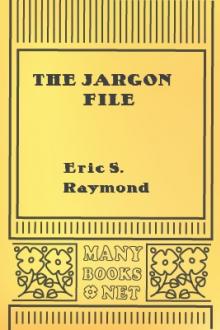
- Author: Eric S. Raymond
- Performer: -
Book online «The Jargon File by Eric S. Raymond (ebook reader android txt) 📕». Author Eric S. Raymond
an dodecahedron's edge/vertex graph (later versions supported other
topologies, including an icosahedron and M�bius strip). The player
started somewhere at random in the cave with five `crooked arrows';
these could be shot through up to three connected rooms, and would
kill the wumpus on a hit (later versions introduced the wounded
wumpus, which got very angry). Unfortunately for players, the movement
necessary to map the maze was made hazardous not merely by the wumpus
(which would eat you if you stepped on him) but also by bottomless
pits and colonies of super bats that would pick you up and drop you at
a random location (later versions added `anaerobic termites' that ate
arrows, bat migrations, and earthquakes that randomly changed pit
locations).
This game appears to have been the first to use a non-random
graph-structured map (as opposed to a rectangular grid like the even
older Star Trek games). In this respect, as in the dungeon-like
setting and its terse, amusing messages, it prefigured [14922]ADVENT
and [14923]Zork and was directly ancestral to the latter (Zork
acknowledged this heritage by including a super-bat colony). A C
emulation of the original Basic game is available at the
Retrocomputing Museum, [14924]http://www.ccil.org/retro.
Node:WYSIAYG, Next:[14925]WYSIWYG, Previous:[14926]wumpus, Up:[14927]=
W =
WYSIAYG /wiz'ee-ayg/ adj.
Describes a user interface under which "What You See Is All You Get";
an unhappy variant of [14928]WYSIWYG. Visual, `point-and-shoot'-style
interfaces tend to have easy initial learning curves, but also to lack
depth; they often frustrate advanced users who would be better served
by a command-style interface. When this happens, the frustrated user
has a WYSIAYG problem. This term is most often used of editors, word
processors, and document formatting programs. WYSIWYG `desktop
publishing' programs, for example, are a clear win for creating small
documents with lots of fonts and graphics in them, especially things
like newsletters and presentation slides. When typesetting book-length
manuscripts, on the other hand, scale changes the nature of the task;
one quickly runs into WYSIAYG limitations, and the increased power and
flexibility of a command-driven formatter like [14929]TeX or Unix's
[14930]troff becomes not just desirable but a necessity. Compare
[14931]YAFIYGI.
Node:WYSIWYG, Next:[14932]X, Previous:[14933]WYSIAYG, Up:[14934]= W =
WYSIWYG /wiz'ee-wig/ adj.
[Traced to Flip Wilson's "Geraldine" character c.1970] Describes a
user interface under which "What You See Is What You Get", as opposed
to one that uses more-or-less obscure commands that do not result in
immediate visual feedback. True WYSIWYG in environments supporting
multiple fonts or graphics is a a rarely-attained ideal; there are
variants of this term to express real-world manifestations including
WYSIAWYG (What You See Is Almost What You Get) and WYSIMOLWYG (What
You See Is More or Less What You Get). All these can be mildly
derogatory, as they are often used to refer to dumbed-down
[14935]user-friendly interfaces targeted at non-programmers; a hacker
has no fear of obscure commands (compare [14936]WYSIAYG). On the other
hand, [14937]EMACS was one of the very first WYSIWYG editors,
replacing (actually, at first overlaying) the extremely obscure,
command-based [14938]TECO. See also [14939]WIMP environment. [Oddly
enough, WYSIWYG has already made it into the OED, in lower case yet.
--ESR]
Node:= X =, Next:[14940]= Y =, Previous:[14941]= W =, Up:[14942]The
Jargon Lexicon
= X =
[14943]X:
[14944]XEROX PARC:
[14945]XOFF:
[14946]XON:
[14947]xor:
[14948]xref:
[14949]XXX:
[14950]xyzzy:
Node:X, Next:[14951]XEROX PARC, Previous:[14952]WYSIWYG, Up:[14953]= X
=
X /X/ n.
Used in various speech and writing contexts (also in lowercase) inroughly its algebraic sense of `unknown within a set defined by
context' (compare [14954]N). Thus, the abbreviation 680x0 stands for
68000, 68010, 68020, 68030, or 68040, and 80x86 stands for 80186,
80286, 80386, 80486, 80586 or 80686 (note that a Unix hacker might
write these as 680[0-6]0 and 80[1-6]86 or 680?0 and 80?86
respectively; see [14955]glob). 2. [after the name of an earlier
window system called `W'] An over-sized, over-featured,
over-engineered and incredibly over-complicated window system
developed at MIT and widely used on Unix systems.
Node:XEROX PARC, Next:[14956]XOFF, Previous:[14957]X, Up:[14958]= X =
XEROX PARC /zee'roks park'/ n.
The famed Palo Alto Research Center. For more than a decade, from the
early 1970s into the mid-1980s, PARC yielded an astonishing volume of
groundbreaking hardware and software innovations. The modern mice,
windows, and icons style of software interface was invented there. So
was the laser printer and the local-area network; and PARC's series of
D machines anticipated the powerful personal computers of the 1980s by
a decade. Sadly, the prophets at PARC were without honor in their own
company, so much so that it became a standard joke to describe PARC as
a place that specialized in developing brilliant ideas for everyone
else.
The stunning shortsightedness and obtusity of XEROX's top-level
[14959]suits has been well anatomized in "Fumbling The Future: How
XEROX Invented, Then Ignored, the First Personal Computer" by Douglas
K. Smith and Robert C. Alexander (William Morrow & Co., 1988, ISBN
0-688-09511-9).
Node:XOFF, Next:[14960]XON, Previous:[14961]XEROX PARC, Up:[14962]= X
=
XOFF /X-of/ n.
Syn. [14963]control-S.
Node:XON, Next:[14964]xor, Previous:[14965]XOFF, Up:[14966]= X =
XON /X-on/ n.
Syn. [14967]control-Q.
Node:xor, Next:[14968]xref, Previous:[14969]XON, Up:[14970]= X =
xor /X'or/, /kzor/ conj.
Exclusive or. A xor B' meansA or B, but not both'. "I want to get
cherry pie xor a banana split." This derives from the technical use of
the term as a function on truth-values that is true if exactly one of
its two arguments is true.
Node:xref, Next:[14971]XXX, Previous:[14972]xor, Up:[14973]= X =
xref /X'ref/ v.,n.
Hackish standard abbreviation for `cross-reference'.
Node:XXX, Next:[14974]xyzzy, Previous:[14975]xref, Up:[14976]= X =
XXX /X-X-X/ n.
A marker that attention is needed. Commonly used in program comments
to indicate areas that are kluged up or need to be. Some hackers liken
`XXX' to the notional heavy-porn movie rating. Compare [14977]FIXME.
Node:xyzzy, Next:[14978]YA-, Previous:[14979]XXX, Up:[14980]= X =
xyzzy /X-Y-Z-Z-Y/, /X-Y-ziz'ee/, /ziz'ee/, or /ik-ziz'ee/ adj.
[from the ADVENT game] The [14981]canonical `magic word'. This comes
from [14982]ADVENT, in which the idea is to explore an underground
cave with many rooms and to collect the treasures you find there. If
you type `xyzzy' at the appropriate time, you can move instantly
between two otherwise distant points. If, therefore, you encounter
some bit of [14983]magic, you might remark on this quite succinctly by
saying simply "Xyzzy!" "Ordinarily you can't look at someone else's
screen if he has protected it, but if you type quadruple-bucky-clear
the system will let you do it anyway." "Xyzzy!" It's traditional for
xyzzy to be an [14984]Easter egg in games with text interfaces.
Xyzzy has actually been implemented as an undocumented no-op command
on several OSes; in Data General's AOS/VS, for example, it would
typically respond "Nothing happens", just as [14985]ADVENT did if the
magic was invoked at the wrong spot or before a player had performed
the action that enabled the word. In more recent 32-bit versions, by
the way, AOS/VS responds "Twice as much happens".
Early versions of the popular `minesweeper' game under Microsoft
Windows had a cheat mode triggered by the command
`xyzzy' that turns the top-left pixel of the
screen different colors depending on whether or not the cursor is over
a bomb. This feature temporarily diasappeared in Windows 98, but
reappeared in Windows 2000.
The following passage from "The Wonderful Wizard of Oz" by L. Frank
Baum, suggesting a possible pre-ADVENT origin, has recently come to
light:
"Ziz-zy, zuz-zy, zik!" said Dorothy, who was now standing on both
feet. This ended the saying of the charm, and they heard a great
chattering and flapping of wings, as the band of Winged Monkeys flew
up to them.
The text can be viewed at
[14986]ftp://metalab.unc.edu/pub/docs/books/gutenberg/etext93/wizoz10.
txt.
Another possible pre-ADVENT porigin is discussed at
[14987]http://people.delphi.com/rickadams/adventure/c---xyzzy.html.
Node:= Y =, Next:[14988]= Z =, Previous:[14989]= X =, Up:[14990]The
Jargon Lexicon
= Y =
[14991]YA-:
[14992]YABA:
[14993]YAFIYGI:
[14994]YAUN:
[14995]Yellow Book:
[14996]yellow card:
[14997]yellow wire:
[14998]Yet Another:
[14999]YHBT:
[15000]YKYBHTLW:
[15001]YMMV:
[15002]You are not expected to understand this:
[15003]You know you've been hacking too long when:
[15004]Your mileage may vary:
[15005]Yow!:
[15006]yoyo mode:
[15007]Yu-Shiang Whole Fish:
Node:YA-, Next:[15008]YABA, Previous:[15009]xyzzy, Up:[15010]= Y =
YA- abbrev.
[Yet Another] In hackish acronyms this almost invariably expands to
[15011]Yet Another, following the precedent set by Unix yacc(1) (Yet
Another Compiler-Compiler). See [15012]YABA.
Node:YABA, Next:[15013]YAFIYGI, Previous:[15014]YA-, Up:[15015]= Y =
YABA /ya'b*/ n.
[Cambridge] Yet Another Bloody Acronym. Whenever some program is being
named, someone invariably suggests that it be given a name that is
acronymic. The response from those with a trace of originality is to
remark ironically that the proposed name would then be
`YABA-compatible'. Also used in response to questions like "What is
WYSIWYG?" See also [15016]TLA.
Node:YAFIYGI, Next:[15017]YAUN, Previous:[15018]YABA, Up:[15019]= Y =
YAFIYGI /yaf'ee-y*-gee/ adj.
[coined in response to WYSIWYG] Describes the command-oriented
ed/vi/nroff/TeX style of word processing or other user interface, the
opposite of [15020]WYSIWYG. Stands for "You asked for it, you got it",
because what you actually asked for is often not apparent until long
after it is too late to do anything about it. Used to denote
perversity ("Real Programmers use YAFIYGI tools...and like it!") or,
less often, a necessary tradeoff ("Only a YAFIYGI tool can have full
programmable flexibility in its interface.").
This precise sense of "You asked for it, you got it" seems to have
first appeared in Ed Post's classic parody "Real Programmers don't use
Pascal" (see [15021]Real Programmers); the acronym is a more recent
invention.
Node:YAUN, Next:[15022]Yellow Book, Previous:[15023]YAFIYGI,
Up:[15024]= Y =
YAUN /yawn/ n.
[Acronym for `Yet Another Unix Nerd'] Reported from the San Diego
Computer Society (predominantly a microcomputer users' group) as a
good-natured punning insult aimed at Unix zealots.
Node:Yellow Book, Next:[15025]yellow card, Previous:[15026]YAUN,
Up:[15027]= Y =
Yellow Book n.
The print version of this Jargon File; "The New Hacker's Dictionary"
from MIT Press; The book includes essentially all the material the
File, plus a Foreword by Guy L. Steele Jr. and a Preface by Eric S.
Raymond. Most importantly, the book version is nicely typeset and
includes almost all of the infamous Crunchly cartoons by the Great
Quux, each attached to an appropriate entry. The first edition (1991,
ISBN 0-262-68069-6) corresponded to the Jargon File version 2.9.6. The
second edition (1993, ISBN 0-262-68079-3) corresponded to the Jargon
File 3.0.0. The third (1996, ISBN 0-262-68092-0) corresponded to
4.0.0.
Node:yellow card, Next:[15028]yellow wire, Previous:[15029]Yellow
Book, Up:[15030]= Y =
yellow card n.
See [15031]green card.
Node:yellow wire, Next:[15032]Yet Another, Previous:[15033]yellow
card, Up:[15034]= Y =
yellow wire n.
[IBM] Repair wires used when connectors (especially ribbon connectors)
got broken due to some schlemiel pinching them, or to reconnect cut
traces after the FE mistakenly cut one. Compare [15035]blue wire,
[15036]purple wire, [15037]red wire.
Node:Yet Another, Next:[15038]YHBT, Previous:[15039]yellow wire,
Up:[15040]= Y =
Yet Another adj.
[From Unix's yacc(1), `Yet Another Compiler-Compiler', a LALR parser
generator] 1. Of your own work: A humorous allusion often used in
titles to acknowledge that the topic is not original, though the
content is. As in Yet Another AI Group' orYet Another Simulated
Annealing Algorithm'. 2. Of others' work: Describes something of which
there are already far too many. See also [15041]YA-, [15042]YABA,
[15043]YAUN.
Node:YHBT, Next:[15044]YKYBHTLW, Previous:[15045]Yet Another,
Up:[15046]= Y =
YHBT //
[Usenet: very common] Abbreviation: You Have Been Trolled (see
[15047]troll, sense 1). Especially used in "YHBT. YHL. HAND.", which
is widely understood to expand to "You Have Been Trolled. You Have
Lost. Have A Nice Day". You are quite likely to see this if you
respond incautiously to a flame-provoking post that was obviously
floated as sucker bait.
Node:YKYBHTLW, Next:[15048]YMMV, Previous:[15049]YHBT, Up:[15050]= Y =
YKYBHTLW // abbrev.
Abbreviation of `You know you've been hacking too long when...', which
became established on the Usenet group alt.folklore.computers during
extended discussion of the indicated entry in the Jargon File.
Node:YMMV, Next:[15051]You are not expected to understand this,
Previous:[15052]YKYBHTLW, Up:[15053]= Y =
YMMV // cav.
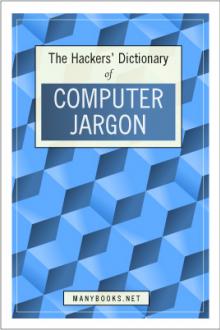

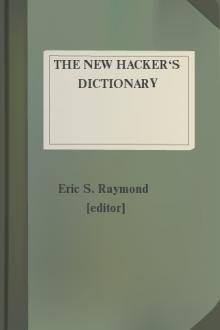
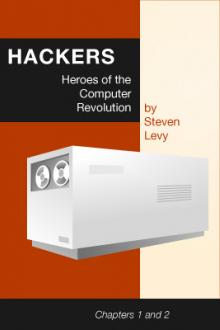
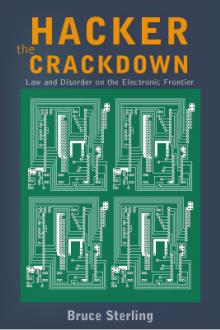
Comments (0)